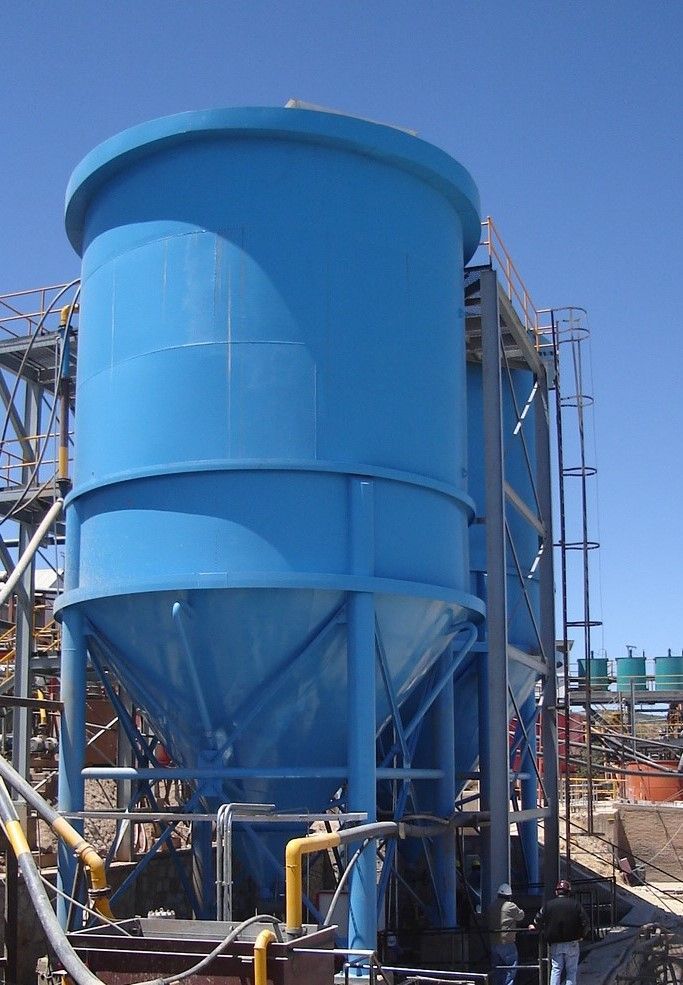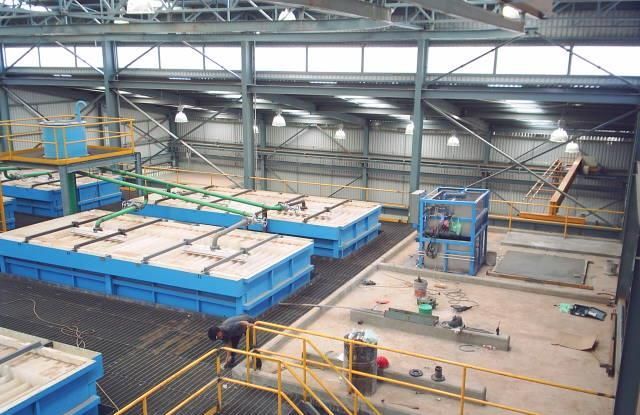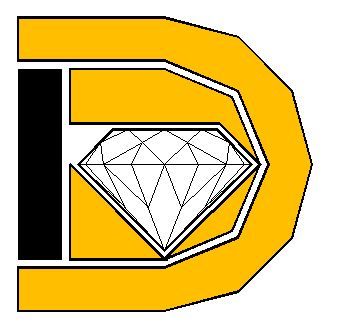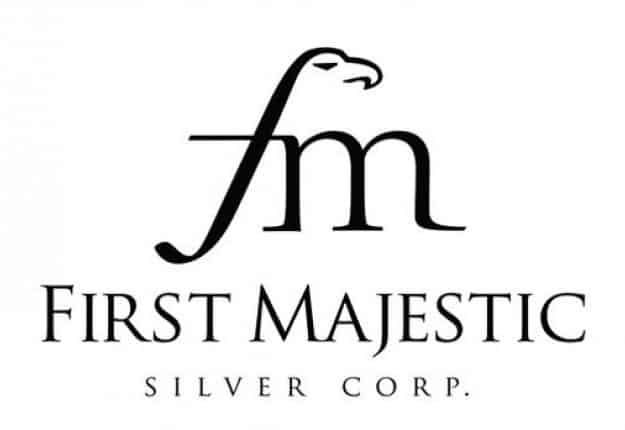"Advanced Solutions for Mining Waste Management (Jales) and Water Treatment."
"In our constant search for cutting-edge technological solutions, we specialize in addressing any need related to tailings management. Our mission is to reduce water use, minimize environmental impact, mitigate risks of conventional dams and optimize costs. Through "Through the implementation of innovative thickening techniques and the effective management of waste, including its transportation of slurries or semi-dry tailings, we strive to reshape the future of tailings, while promoting responsible management practices."
Discover how our innovative products make a difference in conserving water and mitigating the impacts of mining.
Join us on the mission for a greener, more prosperous planet.
HIGH SOLIDS THICKEneR
WHAT IS IT?
The thickener is a piece of equipment designed to separate solids from liquids using the principle of free sedimentation. Its design incorporates a deep cone geometry and clarification modules, making it a highly efficient hybrid solution.
The highlight of this equipment is its operation without the need for mechanisms, rakes or motors. It requires no additional energy for operation, resulting in a significant reduction in operating costs.
This approach of low energy consumption and operation without moving parts contributes to improving the efficiency and reliability of the solid-liquid separation process by operating continuously without requiring maintenance.
HOW DOES IT WORK?
The process begins with feeding the pulp into the upper central part of the equipment. The geometry of the equipment makes it easier for solids to settle in the deep cone, resulting in a high concentration of solids. The particularity of this system is that it achieves this sedimentation without the need to use additional mechanisms; The solids move towards the bottom of the cone naturally.
Results of up to more than 85% solids* of the thickened fraction are achieved.
The water moves to the surface of the tank, passing through a clarification system that uses inclined plate modules. These modules have the ability to promote the sedimentation of fine particles contained in the water, which results in obtaining water of high quality and clarity. This process guarantees an effective separation of solids and liquids, recovering more than 90% of water for reuse.
*The result may vary depending on the rheological characteristics and granulometry.
APPLICATIONS
- Flotation tailings or leaching
- Concentrates
- Recovered process water treatment
- Mine water treatment
- Countercurrent washing system
ADVANTAGES
- Zero energy consumption
- No mechanisms or moving partsLower operating cost
- Lower investment cost (custom design)
- Lower construction footprint
- Greater thickening efficiency
- Greater water recovery
- Greater operational availability
- Minimal maintenance
HOW IS THE SIZE OF A THICKENER SIZED?
Laboratory tests are carried out (on test tubes) with the information obtained, pilot scale tests are carried out in the field with real operating conditions, these tests and trials provide the design parameters necessary to size and manufacture the industrial thickener.
BENEFITS OF PASTE IN MINING TAILINGS (JALES).
Paste dams in mining offer several advantages compared to traditional tailings disposal methods.
- Lower risk of catastrophic failure: Paste dams contain a lower proportion of water, tend to be more stable and less likely to experience catastrophic failure compared to conventional tailings dams.
- Lower environmental impact: The ability to reduce the risk of contamination and improve the stability of dams leads to a lower environmental impact. This benefits the surrounding ecosystems and local communities.
- Greater design flexibility: They can adapt to different geotechnical and topographic conditions, allowing greater customization based on site-specific characteristics.
- Regulatory compliance: Paste dams help mining operations comply with stricter environmental regulations and contribute to a more sustainable image of the mining industry.
- Optimization in water recovery: up to 90% of water is recovered before the tailings are deposited in the dam. This practice benefits both from an environmental and economic perspective, as it reduces the demand for fresh water and minimizes the impact on water resources.
- Less visual impact: The ability to adapt the design of paste dams to the characteristics of the surrounding terrain can help minimize the visual impact of mining infrastructure on the landscape.
- Greater volumetric capacity: The implementation of pastes entails a notable increase in the volume of space allocated for the disposal of tailings, thus surpassing conventional dams. Improvement in the Stability: Gradual consolidation of the paste over time can lead to better stability of the dam.
- Improved waste management: Paste is an effective method of managing fine waste generated during mineral processing. It allows the consolidation and controlled dehydration of the material, reducing the total volume and facilitating waste management.
HIGH RESOLUTION CLARIFIER
WHAT IS IT?
is a piece of equipment that focuses on the clarification of recovered water or fresh water. These devices are used to treat low-density pulps that contain less than 5% solids by weight, with the aim of obtaining completely clear water, with a concentration of suspended solids less than 100 parts per million (ppm).
Clarifiers stand out for incorporating clarification modules in their internal design, which are essential to carry out this water purification process.
HOW DOES IT WORK?The clarifier is made up of two bodies, a square body and a conical section at the bottom.
The pulp feed is located in the upper central part of the equipment, the geometry of the equipment allows the solids to settle in the conical body and these are discharged in the lower part of the cone without requiring any mechanism, the water moves towards the surface passing through a clarification system using plate modules, which make the fine particles settle, obtaining good quality water.
APPLICATIONS
- Treatment of water recovered from processes
- Fresh water treatment
ADVANTAGES
- Zero energy consumption
- No mechanisms or moving parts
- Lower operating costLower investment cost (custom design)
- Lower construction footprint
- Greater clarification efficiency
- Greater operational availability
- Minimal maintenance
HOW IS THE SIZE OF A CARIFIER DIMENSIONED?
Laboratory tests are carried out (in test tubes) with the information obtained, pilot scale tests are carried out in the field with real operating conditions, these tests and trials give the necessary design parameters to size and manufacture the industrial clarifier.
PILOT PLANT
There is a mini pilot plant that serves for solid-liquid separation tests in the initial phase of laboratory experimentation where the selection and dosage of reagents is carried out, in addition to providing preliminary results.
Subsequently, thickening and clarification pilot plant tests are carried out in the mining units to evaluate the performance under real conditions of each process. This mobile pilot plant is distinguished by its easy installation and removal.
This stage concludes with the design of the corresponding industrial equipment, which guarantees optimal results adapted to the specific needs of each mining operation.
ADDITIONAL SERVICES
Our wide range of services ranges from the initial conceptual engineering phase to the complete implementation of turnkey thickening system projects for various applications. In addition to other services:
- Integrated paste production systems for tailings dams and/or internal mine fill.
- Design of pumping system for pasta.
- Design of recovered water pumping system.
- Carrying out pilot tests of solid-liquid separation (thickening).
"Solutions for the treatment of water and mining waste."
Contact us for more information .
Copyright ROB MINING & CONSULTING 2023














